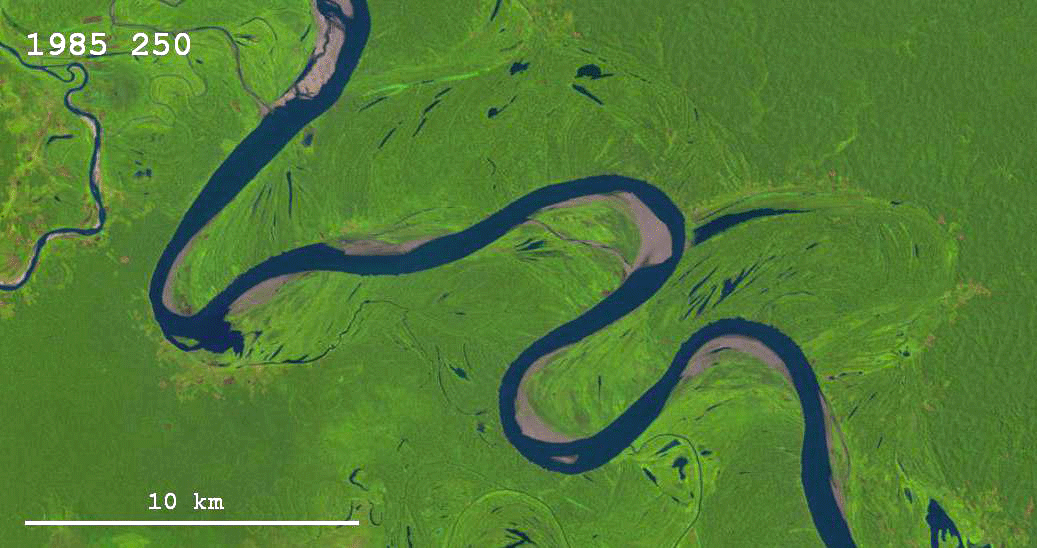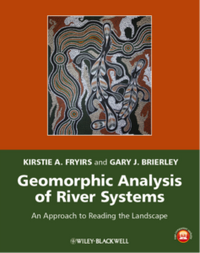Background and why we're covering it
 Meander Migration and Neck Cutoff is an example of River Behavior - not River Evolution. If this captured the change from a meandering river to a braided river, that would be an example of evolution. Source GIF
Meander Migration and Neck Cutoff is an example of River Behavior - not River Evolution. If this captured the change from a meandering river to a braided river, that would be an example of evolution. Source GIF
River evolution is the term Fryirs and Brierley use to describe the long term trajectory of "change" of routine river adjustments (i.e. normal behavior) within a riverscape. When such changes to behavior are pronounced enough, there is a change from river style from one flavor to another (e.g. a single thread meandering river to a braided river). Such changes are typically due to a change in flux boundary conditions and these can be driven by changes in climate, tectonics and geologic forcing, and or anthropogenic changes (e.g. Chapter 13).
Learning Outcomes
- LO 3. Apply principles of geomorphic analysis to a diversity of riverscapes.
- LO 4. Gain an appreciation of how geomorphic processes of erosion, deposition transport and storage of sediment shape topography and create, maintain, sculpt and destroy distinctive landforms.
Resources
We discussed this chapter together in class after independently read it and did not assign a lecture with slides.
Corresponding Chapter in Course Text
 From:
Fryirs KA, Brierley GA. 2013. Geomorphic Analysis of River Systems: An Approach to Reading the Landscape, First Edition. Blackwell Publishing Ltd.: Chichester, U.K.
From:
Fryirs KA, Brierley GA. 2013. Geomorphic Analysis of River Systems: An Approach to Reading the Landscape, First Edition. Blackwell Publishing Ltd.: Chichester, U.K.
This module focuses on: CHAPTER TWELVE: River evolution
Relevant or Cited Literature
Follow up selected readings suggested by Fryris and Brierley (2013) are provided for every chapter in page 328-334 of the text book.